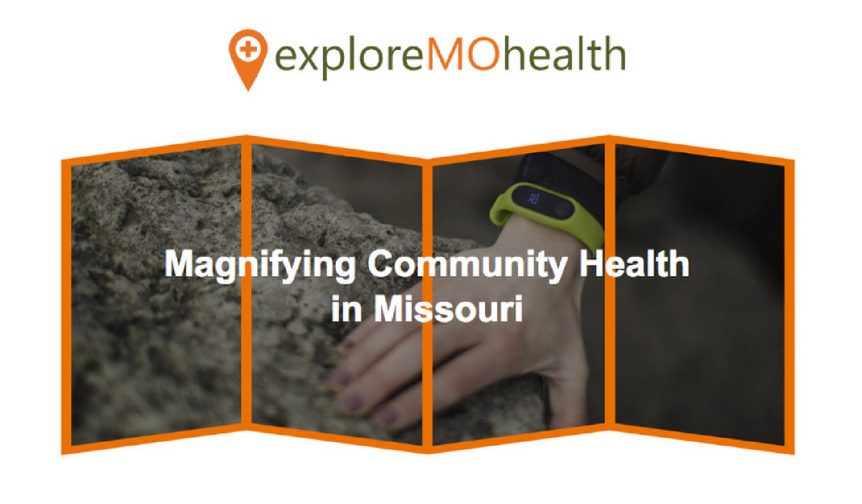MISSOURI | by Joe Gamm | March 25th, 2018
Original article can be found at: http://www.newstribune.com/
____
Health data is flooding into Missouri. In recent weeks, information ranking the state and even its counties has reached the fingertips of Missourians.
Last week, the Missouri Hospital Association Health Institute, Missouri Foundation for Health and University of Missouri Extension Center launched exploreMOhealth.org, a website that allows people to look at data and analysis down to ZIP code levels.
Cole County, for example, has nine ZIP codes.
Having specific data for individual communities will help health care providers better manage community health needs and move away from the traditional way of delivering health care moving away from hospital treatment, according to a news release from the association.
The “big shift” in medicine is moving traditional hospital care beyond hospitals’ walls and into the communities they serve, according to Mat Reidhead, the association’s vice president of research.
“It’s really rare to find health-related data below the county level,” Reidhead said. “It is the only community health needs assessment platform that offers data at that granular of a level. ZIP code-level data in the health space is almost unheard of.”
The data helps health care providers to identify resources addressing communities’ needs.
Health care is beginning to focus more on “upstream” determinants of health — government policies and social, economic and environmental factors — that lead to poor health outcomes. Downstream health care focuses on treating illnesses after they’ve been diagnosed, Reidhead said.
The website is a resource the state’s hospitals and public health professionals can use to develop data-driven, targeted community health assessments, the news release states. It will give those health professionals insights into local variations as they target high-risk communities and create interventions that can deliver the best value.
A perfect example, Reidhead said, is St. Louis County, which has a population of about 1 million people. Within that county are the state’s healthiest ZIP code (Chesterfield), and one the state’s unhealthiest ZIP codes (Walnut Park East, ranked 944). The county includes several of the healthiest ZIP codes and several of the unhealthiest ZIP codes. There are 958 ZIP codes in Missouri.
Overall, St. Louis County is below state averages in depressive disorder, diabetes, asthma, cardio-pulmonary disease and heart disease. But it is above the state average for cancer rates.
Cole County has a striking disparity of health rankings as well. The healthiest ZIP code in the county is Lohman, which is 56th healthiest in the state. The unhealthiest ZIP code is Eugene, which is 344th in the state. Jefferson City has the third- and 16th-ranked ZIP codes in the county.
Obesity is the top health factor affecting Jefferson City, according to the data.
In Russellville, the sixth-ranked ZIP code in the county (200th in the state), the social factor with the greatest effect on health is listed as “income inequality by race.”
According to exploreMOhealth, ZIP codes can be more predictive of a person’s health than their genetic code.
“Having detailed, local information on health factors and health outcomes in the places where Missourians live can help community health leaders take action to help create and sustain a healthy Missouri,” the site states.
Within the site, readers can research counties in the Missouri Health Atlas, which presents data by county. If a person were to look at some factors that may lead to obesity in Jefferson City, they might look at county data that show things like physical activity, healthy eating habits, body mass index (a ratio based on height and weight), alcohol consumption and other factors. Of 785 people surveyed, 70 percent reported being overweight or obese. Of 802 people surveyed, 22.8 percent reported being binge drinkers.
Twenty percent of Cole County residents surveyed responded “yes” to whether they had in any way been limited in their activity because of physical, mental or emotional problems.
Asked if there was a time in the past 12 months when a county resident needed to see a doctor but could not because of cost, 46.5 percent of respondents said they had passed on seeing a doctor because of cost.
Additionally, about 44 percent of people surveyed said they were daily or formerly daily smokers.
The health atlas can help health care providers to use the data to determine interventions for communities, according to the site.
In Cole and Boone counties, where there are metropolitan areas and rural regions, it’s difficult for health providers to get an accurate picture of what’s driving health conditions at a county level, said Matthew Kuhlenbeck, program director for the Missouri Foundation for Health.
“As you look at the ZIP code data, it gives you a chance to see where those differences are happening,” Kuhlenbeck said. “You can really dig deep at a county and ZIP code level.”
The area covered by ZIP code 65101, which is generally eastern Jefferson City and small parts of rural Cole County, is the 864th-most obese in the state. (The larger the number, the worse the rank.) It is 585th in sexually transmitted infections, 580th in smoking and 692nd in substance use disorder as diagnosed by health care facilities. ZIP code 65101 was 723rd in teenage pregnancies.
ZIP code 65109 (generally western Jefferson City and some rural communities to the west of the city) is ranked 778th in obesity, 436th in sexually transmitted infections, 478th in smoking and 677th in substance use disorder. It was 528th in teenage pregnancy.
“There are quite a few data indicators,” Kuhlenbeck said. “When you look at the ZIP indicators, you get an even more robust amount of information.”
The data soon will be useful as nonprofit health organizations, such as Capital Region Medical Center and St. Mary’s Hospital, begin doing health assessments as they are required to every three years.
Kristi Campbell, director of the Cole County Health Department, said her organization and health departments in Callaway, Miller, Moniteau and Osage counties will assist the hospitals as part of the Central Missouri Community Health Assessment Partnership.
The detailed data will be very useful to Cole County, Campbell said.
“If we were going to do a targeted effort — such as a remote vaccination clinic — we could see in the county where we need to target those services,” Campbell said. “We will be using that data in our community health needs assessment.”
As the partnership begins assessing community health needs, it will reach out to community members to ask for their input, Campbell said. Although none have been set, input sessions are expected to begin sometime in early April.
“The intent, really, is for (exploreMOhealth) to be a tool,” Kuhlenbeck said. “It’s going to drive conversations at a local level. What do we think the health drivers are for us? What do we want to do?”
Share this Post













